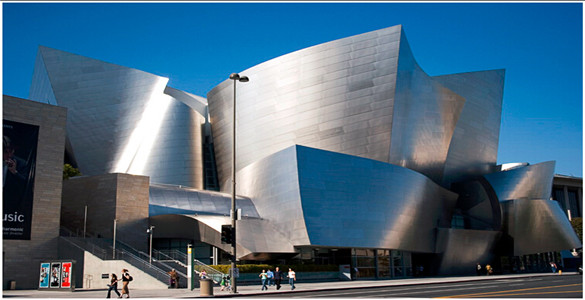
Modern building and structure works require aesthetic appearance and extended life span. As a result stainless steel, once the preserve of prestige projects, is becoming an everyday material due to its strength, corrosion resistance, appearance and sustainability. Peak Metal, as a professional supplier in stainless steel, can meet your needs with a prevalent range of stainless steel products.
Typical applications
Stainless steel is a favorite of architects designing the world ’s tallest buildings, the longest bridges, and the most popular public arts projects. Stainless steel is specified where long life, low maintenance, and aesthetic appeal are critical, including:
• facades
• roofs
• fittings and fitting systems
• concrete rebar
• balustrades
• balconies
• elevators & escalators
• bridges
• structural beams
• heating, cooling and ventilation
Stainless steel benefits
Stainless steel provides a wide range of benefits for architectural & construction projects including:
• aesthetic appeal and inherent long-life
• resistance to high heat, corrosion, pitting, and stress corrosion cracking
• cost-savings on initial material and over the lifecycle of the project
• extended lifespan and min. maintenance for concrete construction where corrosion is a concern
• maintenance free with a minimum increase in investment cost
Grades of stainless steel
Various grades of stainless steel are identified by their content of alloying elements. These affect their metallurgical microstructures (by which the types are designated) as well as their mechanical properties and corrosion resistance, which can be exploited by the engineer and architect.
Ferritic (AISI 400 series)
Typically containing 10.5% min chromium and low carbon (<0.12%). Microstructure of martensite and ferrite.
Martensitic (AISI 400 series)
Typically containing 12-18% chromium and higher carbon (>0.12%). Microstructure of martensite and ferrite.
Austenitic (AISI 300 series)
Typically containing 17-26% chromium, 7-25% nickel and up to 7% molybdenum. Microstructure of austenite, so these grades are non-magnetic.
Duplex
Typically containing 18-25% chromium, 4-7% nickel and up to 4% molybdenum. Microstructure of austenite and ferrite.
Typical grades used in architecture
The austenitic steels account for in excess of 70% of stainless steel production, and represent by far the greatest percentage of stainless steels used in the Architectural, Building and Construction markets. The remainder is primarily ferritic grade 430.
The grades of particular interest to the architect are listed below:
Grade 301
17%Cr7%Ni: A lower alloys grade which results in high strength and comparatively high ductility after cold working.
Grade 304
18%Cr9%Ni: The general purpose grade with excellent workability, weldability and polishability.
Grade 316
18%Cr10%Ni2%Mo: Superior corrosion resistance to the otherwise similar properties of type Grade. The "marine grade" stainless steel.
Grade 304 and Grade 316 are used for internal and external applications.
Grade 430
17%Cr: Interior architectural applications. Generally slightly lower corrosion resistance than Grade 304 with adequate ductility for most forming operations. Not as suitable for welding operations.
The reason for stainless steel
Stainless steel is a functional, practical material with unique aesthetic appeal. Architects and engineers the world over are taking advantage of stainless steels unique combination of properties.
It is a versatile material that is eminently suitable for numerous building and constructional applications, including facades, roofing, windows, doors, building entrances, furniture and a host of attractive interior applications.
Visually attractive, with a sense of strength and permanence, stainless steel requires only minimal maintenance across its many applications.
An exciting and contemporary material, yet with an impressive history spanning many decades, stainless steel blends successfully with its environment, reflecting surrounding colours and images with a dynamic and often stunning effect.
Peak Metal is working with most qualified and advantageous mills or authorized agents in China, which are producing full range of stainless steel applying to constructions and structural works.
Refered from Outokumpu & Atlas

